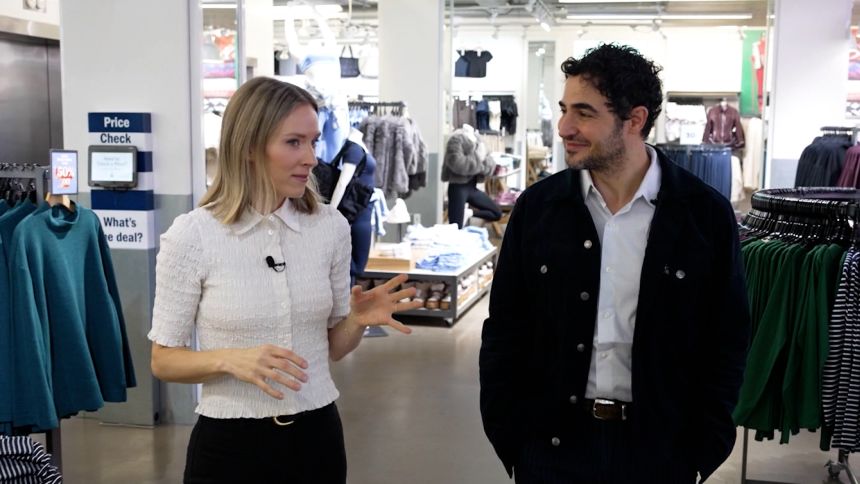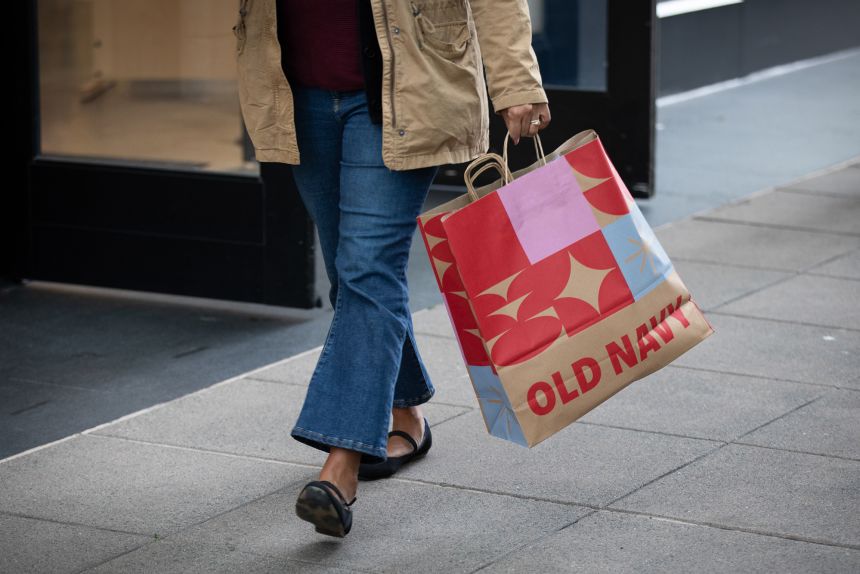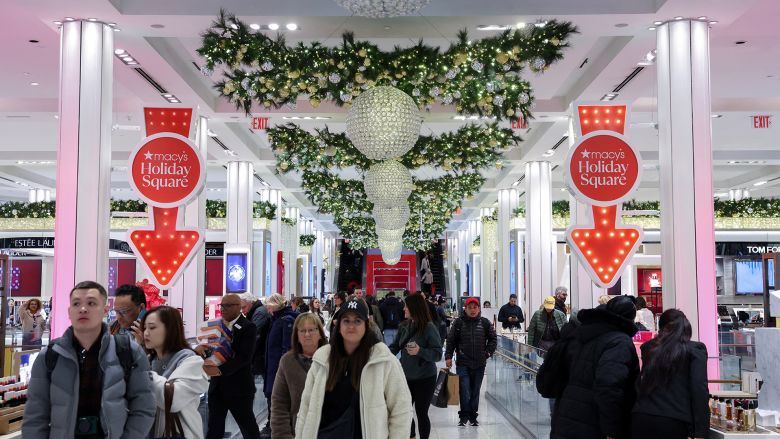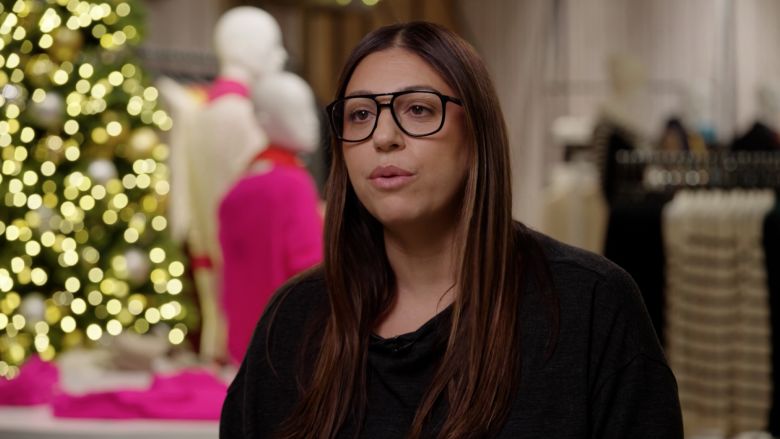New York
—
America’s biggest stores are taking big swings this holiday season, trying to stand out and attract cautious consumers. President Donald Trump’s tariffs, sticky inflation and rising unemployment are prompting Americans to be more careful with their holiday spending.
Wells Fargo projects this year’s holiday sales will rise between 3.5% and 4% from last year. But that doesn’t account for higher prices due to inflation, so actual spending could be flat.
“This year is really back to basics and leveraging strong merchandising, strong discounting, and making sure that (retailers are) getting their customers in the door this holiday,” Wells Fargo retail economist Lauren Murphy told CNN.
The legacy department store Macy’s is revamping the in-store experience to win over wary shoppers. Budget-friendly Old Navy is leveraging its couture-designer-turned-chief-creative-officer Zac Posen. And even the world’s largest retailer, Walmart, is promising a 30-minute turnaround from online order to the delivery truck.
Executives at all three companies told CNN that, regardless of higher prices, they’re working to help customers stretch their dollars and get more for their money.
Macy’s is going back to its roots; hoping to transport customers to the days of glitzy department stores.
In its New York City flagship store, a half-dozen partnerships are waiting for customers, including an NBA Experience and exclusive Disney collaboration. The store itself is decked out with holiday lights and decorations, boasting an indoor holiday market, DJ and new brands on display.
Macy’s iconic Thanksgiving Day Parade Santa, who usually arrives at the end of the parade to kick off the holiday season, is even going on his first ever tour to different stores around the country.
“What we’ve seen around the customer is they’re much more choiceful,” Macy’s chief merchandising officer, Nata Dvir, told CNN. “I think there’s so many places for them to shop, so (we are) really making sure that it’s coupled not only with great product, but having the quality and the value and the experience that comes with it.”
It’s a purposeful bet, putting to the test a multiyear initiative to attract customers and revamp Macy’s remaining locations. The mid-range department store has fended off activist investors amid slumping sales. Last year, Macy’s announced it was closing 150 underperforming stores by 2026 while investing customer service and inventory in its remaining 350 locations.
The plan seemed to be working. Macy’s recently posted its first sales growth in three years. But like all retailers, it now has to grapple with tariffs.
The chain plans for the holidays nearly a year in advance, sourcing items from more than 25 countries. Macy’s worked with vendors to keep prices low in as many categories as possible. But still, some increases will happen for products like toys and sweaters, Dvir said.
“While we saw the tariffs coming towards us, what we tried to do was really offset what that cost (was) by putting more into the product,” she told CNN.
That means investing in elevated fabrics, like cashmere, so customers will hopefully think the quality is worth the cost.
As the holiday season marches on, Macy’s is using its own economists to help translate what the latest economic data will mean for customers. That way, Macy’s can pivot on assortment and pricing.
“It is a science, but there’s a little art that goes into it as well,” Dvir said.
Millions of units. Twenty-two designs. $5 pajama pants.
If the holiday season is Old Navy’s “Super Bowl,” as CEO Horacio Barbeito described it, its family pajamas are its winning touchdown. The seasonal jammies is a multimillion dollar business and one of the company’s biggest events in terms of sales volume.
But Old Navy, with stores in 49 out of 50 states, will need more than festive pajamas to reach cost-burdened consumers this holiday season. So, it’s also betting on its first designer collection with Anna Sui and new styles conceived by one of America’s best-known couture fashion designers, Zac Posen – now, Old Navy’s chief creative officer.

“This was the opportunity of a lifetime. This is the brand that dresses America,” Posen told CNN inside Old Navy’s Times Square location. Posen pointed out the specific features he crafted for the clothing on the shelves, such as bow-tie shoulder straps and pockets on a taffeta holiday dress.
Old Navy is an essential part of parent Gap Inc. The company reported better-than-expected earnings in its third quarter, with a 5% year-over-year revenue rise for Old Navy alone.
But customers are being careful with spending, and tariffs still loom over Old Navy’s merchandise. The retailer has introduced RFID technology that allows associates to know what’s in stock and locate it in stores, helping to find products quickly and keep customers from walking out of the store and losing a sale.

“In our industry, it’s a game changer,” Barbeito said.
The CEO insists Old Navy’s focus on value means it will “not participate” in the swirling uncertainty in the economy. Posen said the brand will persevere no matter what’s issues it faces.
“Every year has its challenges. Sometimes it’s the economy, sometimes it’s the weather, sometimes it’s a change of an administration,” Posen said. “At the end of the day people want to look good, they want to feel good, and that line continues and I think when things can be more challenging, we rise to the occasion.”
In Greencastle, Pennsylvania, sits a 1.5 million square foot fulfillment center where machines do most of the processing and packaging of online order.
AI-powered machines make custom boxes for each order, sort the product and tapes the box shut. Associates work with the machines surrounded by the quiet hum of automation.
One of four so-called NexGen fulfillment centers across the country, this brand new facility is part of Walmart’s plans to win customers this holiday season by being the speediest. America’s largest retailer said the center can process 100,000 packages a day.
“When you click buy, we can actually get it out of the internet onto a trailer going to your house within 30 minutes,” Barat Smith, vice president of operations for Walmart’s US supply chain, told CNN.
Walmart is heading into this holiday season with a head start thanks to its strong earnings. Revenue rose 5.8% in the most recent quarter, with a 27% hike in e-commerce alone. As prices have risen since the Covid-19 pandemic, Walmart has attracted more middle- to higher-income shoppers looking for a bargain.
But Walmart faces obvious competition in the realm of online shopping this holiday season – juggernaut Amazon as well as affordable Chinese drop-shippers like Temu and Shein.
“We focus on operating at everyday low cost so that we can deliver everyday low prices on a consistent basis,” David Guggina, Walmart’s executive vice president and chief e-commerce officer, told CNN. “In this respect, we’re talking about speed. If we create a great customer experience that drives more orders, and more orders drives density, and density allows us to lower our cost to operate.”
These fulfillment centers are twice as productive as Walmart’s older facilities and move half of all the company’s volume.
Walmart associates interact with packages just five times compared to the legacy fulfillment centers, which have 12 employee steps.
“And some of our other facilities, we can walk up to 10 miles a day for our associates. Now the furthest they walk is from their car into their workstation,” Smith said.










